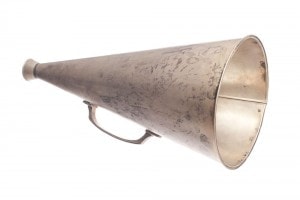
Applying lipstick from Shutterstock
Filed under: Articles, Intranets
The design of public websites, particularly when they have a marketing or branding role, is vital. In these cases, a team of experienced graphic designers and front end developers work hard to create polished and beautiful designs.
When it comes to intranets, however, is their ‘look and feel’ so important? Fundamentally, should intranets look sexy?
Design of public sites
We are all exposed to the wide range of designs for public sites, from the very ugly to the very beautiful.
Major consumer brands have attractive and vibrant home pages, while even technology companies present polished designs.
These sites reflect the brands and images of the companies they belong to, making their design an important factor. The sites are also about marketing the businesses’ products or services, and the design plays a role in engaging potential purchasers.
A whole industry has grown around delivering these highly polished and sexy sites, made up of specialists in branding, communication, marketing, visual design, web design and web development.
When it comes to intranets, do these same factors apply? Do intranets need to be sexy?
Different from the website
First off, the intranet should not look the same as the public website. As discussed in the article Worlds apart: intranets and websites, these two sites are different in almost every respect, including the audience, size, structure, purpose and frequency of use.
These differences should be reflected in the design of the two sites.
At a more basic level, staff need to be able to easily distinguish between information on the website (publicly available) and the intranet (potentially confidential).
Without the marketing or selling aspect, intranets should also be much simpler and cleaner, focused much more on being useful than attractive.
Build confidence and trust
The intranet cannot afford to be ugly, poorly designed or dated in appearance. This sends a strong message to staff that the site is unimportant, uncared for, and unlikely to be useful.
The visual design of the intranet should build trust and confidence in the site. It should say: ‘this is a high quality site built by professionals who care about delivering an effective solution that works for staff’.
A polished and well-designed appearance shows (at least in part) that the organisation is prepared to devote resources to the intranet, and that it is an important platform for delivering information and tools.
At the most basic level, good design has an emotional impact, and this should not be discounted for intranets.
Brand and identity
The intranet needs to have a defined brand and identity of its own. While this should be derived from the overall corporate identity, it should be distinct from it.
This may start with a name, other than just ‘the intranet’. While this may seem a small point, a name determines how people refer to the site: ‘you’ll find that on Max’, ‘I think that’s on Focus’.
The design of the site should also be visually distinctive, if still somewhat understated. The design is derived from the character and nature of the site, as discussed in the earlier article Starting to define the intranet brand.
Having a clear design allows a line to be drawn around the boundary of the intranet, as well as encouraging previously separate tools (search, staff directory, HR self-service) to move within the core platform.
The intranet design can then evolve over time at its own pace, reflecting corporate changes, but not necessarily in lock-step. That way, every small change to the corporate style guide doesn’t require a major intranet redevelopment.
At the end of the day, the intranet design should communicate what the intranet is, why it should be used, and build the confidence that the site is of value.





